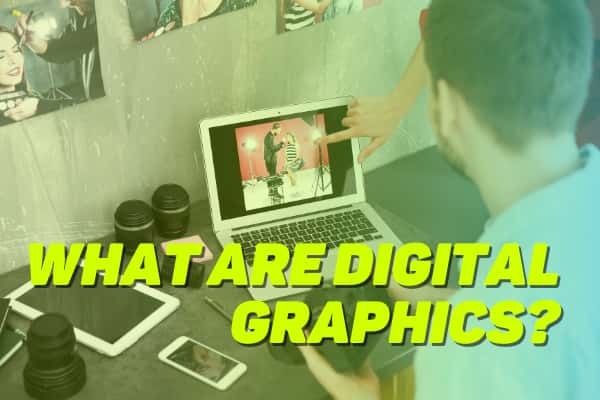Table of Contents
ToggleA Comprehensive Guide to Digital Graphics: Understanding, Creating, and Utilizing Visual Media

I. Introduction to Digital Graphics
A. Definition Digital Graphics
Historical Digital graphics have come a long since the early days of computing. The journey in the 1950s when artists started with computer-generated imagery. The first digital images crude and lacked detail, but they laid the for what would become vibrant field encompassing many artistic.
Evolution of Digital Forms As technology advanced, so the possibilities for digital art. The introduction of computers in the 1980s graphics software more accessible By the 1990s we began to see the rise of the internet, which opened up new avenues for artists. Today, artists can create stunning visuals using a variety tools, from simple apps on mobile devices to sophisticated software for professional work.
** in Modern Media**In today’s digital age, visual media is essential. Whether you scrolling through social media, watching an online ad, or visiting a website, chances are you encounter digital graphics every day. They play a crucial role in communication, helping brands tell their stories and capture the audience’s attention.
.
B. Types of Digital Graphics
B. Types of Digital Graphics
Raster Graphics Raster graphics are made of pixels, and they are best used for detailed images like photographs. When scaling these images, resolution can be lost, to blurred edges. Common formats include JPEG, PNG, and GIF.
Vector Graphics Unlike raster graphics, vector graphics use mathematical equations to create images. This means can be resized without any loss of quality, making them ideal for logos and illustrations. Common formats include SVG and AI.
3D Graphics3D graphics add depth and dimension to images. They are widely used in video games, movies, and simulations. 3D modeling software can create lifelike visuals that can be manipulated from various angles.
C. Applications of Digital Graphics
Graphic Design Graphic design is perhaps the most recognized application of digital graphics. From branding elements like logos to marketing materials, graphic designers play a crucial role in shaping how a product or company communicates visually.
Web Development Digital graphics are essential in web development. Good design can improve user experience and engagement on websites, leading to higher conversion rates. Developers and designers work together to create visually appealing and functional sites.
Digital Marketing In the realm of digital marketing, eye-catching graphics can significantly influence consumer behavior. Companies use visuals in ads, social media posts, and blogs to attract and retain customers, making graphic design a vital component of marketing strategies.

II. Tools and Software for Creating Digital Graphics
A. Overview of Graphic Design Software
Adobe Creative Cloud Adobe’s suite, including Photoshop and Illustrator, is the industry standard for graphic design. These powerful tools provide a range of features for creating stunning visuals, although they come with a learning curve.
Affinity Designer Affinity Designer offers a more budget-friendly alternative to Adobe. It’s suitable for both raster and vector graphics and is known for its user-friendly interface, making it a favorite among newcomers and experienced designers alike.
GIMP and Other Free Alternatives GIMP is a free, open-source option that provides a powerful set of tools for graphic design. While it may not have every feature that Adobe offers, it’s a fantastic starting point for those looking to explore digital graphics without a financial commitment.
B. Hardware Considerations
Graphics Tablets For artists who prefer drawing, graphics tablets are a game-changer. They provide a natural way to create digital art by mimicking the feeling of using traditional paper and pencil.
Monitors and Color Accuracy A good monitor is crucial for graphic design. Color accuracy ensures that the hues you see on your screen match how the design will look in print or on other devices.
Performance Devices for Intensive Graphics Work High-performance computers or laptops are essential for running graphic design software smoothly. Faster processors and more RAM can significantly enhance your workflow, especially with complex graphics.
C. Emerging Technologies in Graphic Creation
Artificial Intelligence in Design AI is beginning to influence graphic design by automating certain tasks, such as background removal or color correction. This allows designers to focus more on creativity rather than repeating mundane tasks.
Virtual and Augmented Reality Tools Virtual and augmented reality are expanding how we experience graphics. Designers are now creating immersive experiences that blend real-world elements with digital visuals, transforming the way we interact with graphics.
Collaborative Graphic Design Platforms Platforms like Figma and Adobe XD enable multiple designers to work on the same project simultaneously. This collaboration fosters creativity and speeds up the design process, making teamwork easier than ever.
Artificial Intelligence in Design AI is beginning to influence graphic design by automating certain tasks, such as background removal or color correction. This allows designers to focus more on creativity rather than repeating mundane tasks.
Virtual and Augmented Reality Tools Virtual and augmented reality are expanding how we experience graphics. Designers are now creating immersive experiences that blend real-world elements with digital visuals, transforming the way we interact with graphics.
Collaborative Graphic Design Platforms Platforms like Figma and Adobe XD enable multiple designers to work on the same project simultaneously. This collaboration fosters creativity and speeds up the design process, making teamwork easier than ever.
Artificial Intelligence in Design AI is beginning to influence graphic design by automating certain tasks, such as background removal or color correction. This allows designers to focus more on creativity rather than repeating mundane tasks.
Virtual and Augmented Reality Tools Virtual and augmented reality are expanding how we experience graphics. Designers are now creating immersive experiences that blend real-world elements with digital visuals, transforming the way we interact with graphics.
Collaborative Graphic Design Platforms Platforms like Figma and Adobe XD enable multiple designers to work on the same project simultaneously. This collaboration fosters creativity and speeds up the design process, making teamwork easier than ever.

V. The Future of Digital Graphics
A. Innovations Shaping the Industry
Virtual Reality Graphics The rise of virtual reality opens up exciting possibilities, enabling designers to create immersive experiences that engage users on multiple levels.
Generative Art and Algorithms Generative art leverages algorithms to produce visually appealing designs. This innovative approach allows for unique creations that can adapt based on user interaction or data input.
The Role of Blockchain in Digital Art Blockchain technology is transforming the art world by introducing concepts like NFT (non-fungible tokens). Artists can now sell their digital works securely, ensuring authenticity and ownership.
B. Digital Graphics in Marketing and Advertising
Impact of Visual Content on Consumer Behavior Visual content greatly influences how consumers engage with advertisements. Graphics can convey messages quickly and effectively, increasing the likelihood of conversion.
Trends in Social Media Graphics Social media platforms are constantly evolving, and so are the graphics used on them. Staying abreast of visual trends is crucial for marketers looking to grab attention.
Data Visualization for Business Insights Businesses are increasingly using graphics to present data visually. Well-designed infographics can simplify complex information, making it more digestible and actionable for audiences.
C. Career Opportunities in Digital Graphics
Roles and Responsibilities in Various FieldsThe field of digital graphics offers diverse career paths, from graphic designers and web developers to UX/UI designers and digital marketers—each with unique responsibilities.
Skills Required for SuccessSuccessful designers typically have strong creative skills, technical proficiency in design software, and an understanding of user experience principles.
How to Build a Portfolio and NetworkBuilding a portfolio is essential for showcasing your work to potential employers or clients. Networking with other professionals in the industry can also open doors to new job opportunities and collaborations.

